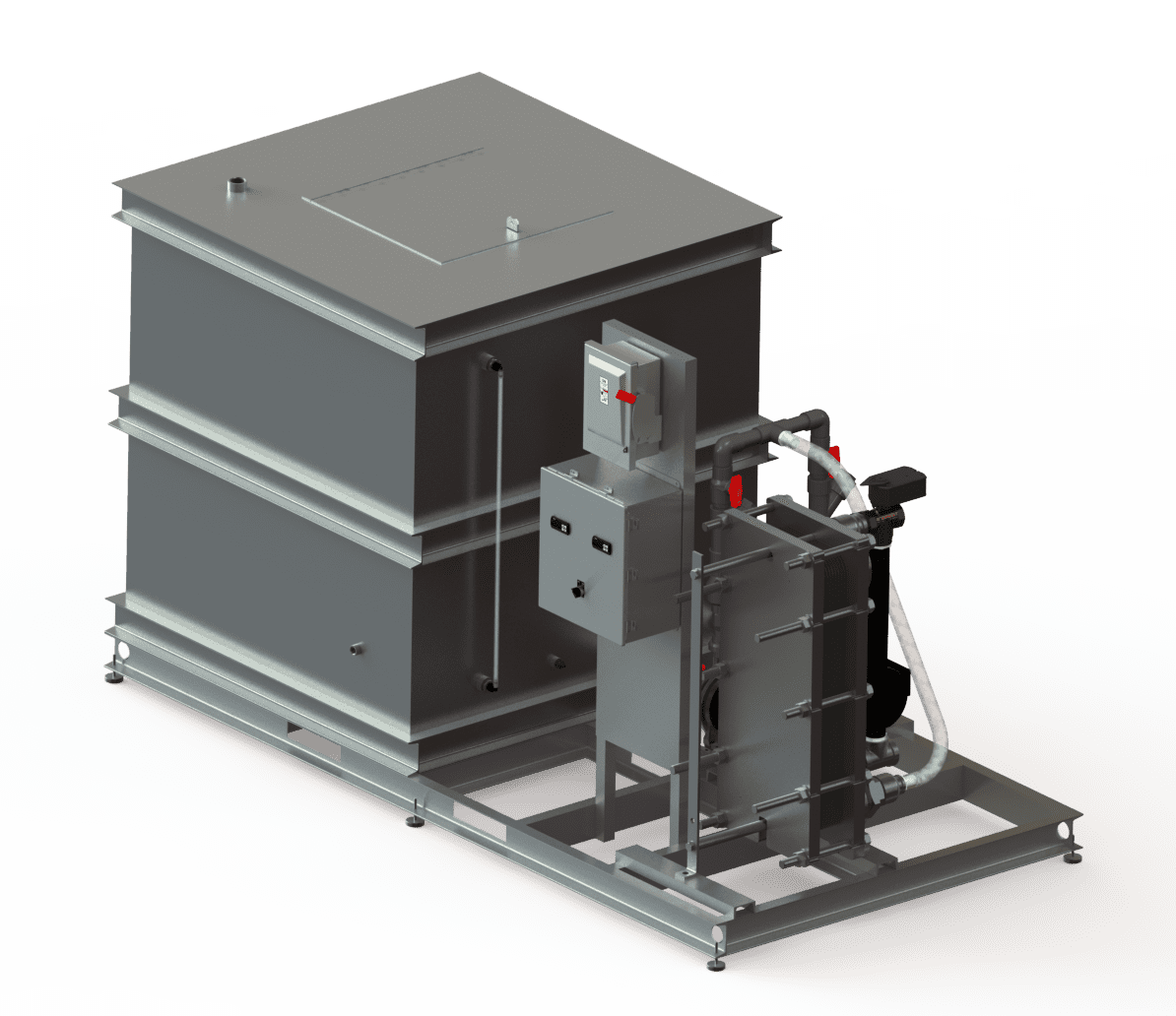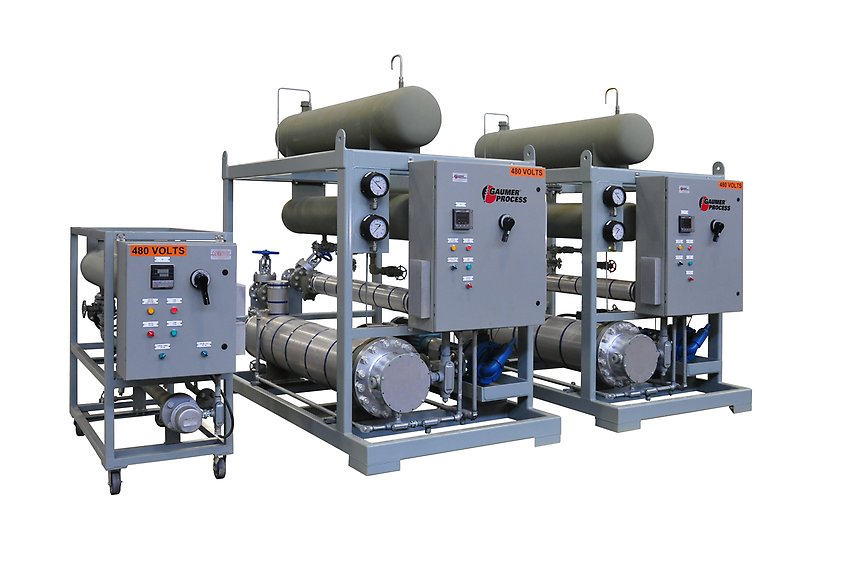A Comprehensive Guide to Choosing the Right Heat Transfer Equipments for Your Demands
Selecting the suitable Heat transfer system is crucial for operational effectiveness. Various systems provide to various requirements, affected by elements such as temperature level array and fluid kind. Comprehending the principles behind Heat transfer, such as convection, radiation, and conduction, is important. Additionally, evaluating energy resources and maintenance techniques can influence long-lasting performance. A closer examination of these factors to consider reveals just how to customize a system to particular needs. What should one prioritize in this complicated decision-making process?
Understanding Heat Transfer: Key Ideas and Principles
Although Heat transfer might seem like an uncomplicated concept, it includes a series of principles that are basic for reliable system design. Comprehending these principles is important for designers and developers that intend to enhance thermal performance in different applications. Transmission, as an example, entails the transfer of Heat via strong materials, while convection refers to the activity of Heat within fluids. Radiation, an additional vital concept, defines how Heat can be moved via electromagnetic waves. Each of these systems plays a vital role in establishing just how energy relocates within a system. By thoroughly grasping these ideas, experts can make educated decisions, ensuring that Heat transfer systems operate efficiently and meet the details needs of their applications
Kinds Of Heat Transfer Systems: An Introduction
Comprehending the principles of Heat transfer prepares for exploring the various kinds of Heat transfer systems readily available. Heat transfer systems can be categorized primarily right into three kinds: transmission, convection, and radiation. Conduction involves Heat transfer via solid materials, depending on straight get in touch with in between particles. Convection, on the various other hand, happens in liquids (gases and liquids) where the activity of the fluid itself facilitates Heat transfer. Radiation involves the transfer of Heat through electromagnetic waves and does not call for a tool, allowing it to take place in a vacuum cleaner. Each type of system has unique characteristics and applications, making it vital for individuals and organizations to very carefully evaluate their details requirements when picking the most suitable Heat transfer service.
Applications of Heat Transfer Systems in Numerous Industries
Heat transfer systems play a vital duty across numerous markets, impacting performance and product top quality. In industrial production procedures, they help with precise temperature level control, while in food and drink handling, they assure safety and security and preservation. Furthermore, a/c and climate control systems depend heavily on reliable Heat transfer to preserve comfy settings.
Industrial Manufacturing Processes

Numerous industrial manufacturing procedures rely greatly on effective Heat transfer systems to take full advantage of productivity and enhance item top quality. In sectors such as metalworking, Heat exchangers play a crucial role in preserving suitable temperatures during welding, spreading, and building. These systems guarantee uniform Heat circulation, which is vital for achieving desired material properties. In a similar way, in the chemical manufacturing market, Heat transfer systems facilitate precise temperature level control during responses, affecting yield and security. In fabric production, reliable Heat administration is essential for coloring and ending up processes, affecting color consistency and material top quality. By picking suitable Heat transfer innovations, suppliers can enhance energy effectiveness and lower functional prices, eventually leading to a much more lasting and competitive manufacturing setting.
Food and Beverage Handling
Reliable Heat transfer systems are just as important in the food and drink processing industry, where maintaining optimal temperature levels is vital for food security and high quality. These systems play a necessary function in processes such as pasteurization, sanitation, and cooking, making sure that items are risk-free for intake and maintain their nutritional value. Heat exchangers, for example, effectively transfer Heat between fluids, maximizing power usage while reducing temperature changes. Additionally, refrigeration systems are essential for extending and preserving perishable items service life. The selection of Heat transfer technology straight affects operational efficiency and product integrity, making it vital for food and beverage producers to pick the proper systems customized to their certain handling demands. This mindful selection inevitably adds to customer complete satisfaction and food safety and security.

Heating And Cooling and Climate Control
While many sectors rely upon Heat transfer systems for effectiveness, HVAC (Home Heating, Air Flow, and A/c) plays a crucial duty in keeping indoor environment control across various setups. These systems utilize Heat transfer principles to manage moisture, air, and temperature level quality, making sure comfort and security in domestic, commercial, and industrial atmospheres. Properly designed heating and cooling systems improve energy performance, lower functional expenses, and reduce environmental influence. In industrial buildings, for example, reliable environment control adds to worker performance and consumer complete satisfaction. In industrial applications, heating and cooling systems assist keep optimal problems for tools operation and product conservation. Selecting the right Heat transfer system is important for conference certain environment control requirements and achieving general system performance.
Evaluating Power Sources for Heat Transfer Solutions
In examining energy resources for Heat transfer systems, a comparison of sustainable power alternatives and nonrenewable fuel source considerations is essential. Eco-friendly resources, such as solar and wind, offer lasting alternatives that click here for info can decrease environmental influence. Alternatively, nonrenewable fuel sources stay prevalent due to their established infrastructure and power thickness, motivating a mindful evaluation of both options.
Renewable Power Options

Nonrenewable Fuel Source Considerations
Examining nonrenewable fuel source considerations is crucial for the efficiency and sustainability of Heat transfer systems. Fossil fuels, such as gas, oil, and coal, are typical power resources that give significant Heat outcome, making them preferred selections for property and commercial applications. Their ecological impact, consisting of greenhouse gas discharges and source depletion, increases problems. When choosing a warmth transfer system, it is vital to analyze the accessibility, expense, and governing variables connected with these fuels. Furthermore, the effectiveness of nonrenewable fuel source systems need to be thought about, as higher performance can reduce some environmental drawbacks. Eventually, a well balanced strategy considering efficiency and sustainability can direct decision-makers towards one of the most suitable important site Heat transfer remedy for their specific requirements.
Factors to Take Into Consideration When Picking a Warm Transfer System
Picking an appropriate Heat transfer system needs mindful consideration of numerous variables that can considerably affect efficiency and efficiency. One vital element is the operating temperature level array, which determines the materials and style appropriate for the application. Furthermore, the kind of fluid made use of in the system-- whether gas or liquid-- impacts Heat transfer efficiency and compatibility. The system's dimension and capacity need to line up with the specific needs of the procedure to prevent ineffectiveness. Power resource accessibility is also vital, influencing operating expense and sustainability. The installment atmosphere, including area restraints and access for upkeep, plays a considerable function in system selection. Regulative compliance and safety standards must be taken into consideration to ensure the system satisfies all legal demands.
Maintenance and Performance Optimization for Heat Transfer Equipments
Preserving Heat transfer systems is crucial for making certain optimal efficiency and durability. Regular upkeep activities, such as cleaning up Heat exchangers and inspecting insulation, assistance prevent effectiveness losses as a result of fouling and thermal linking. Additionally, monitoring system parameters, consisting of pressure and temperature, permits very early detection of anomalies, minimizing downtime and expensive repairs. Executing a preventative upkeep schedule can enhance efficiency and expand the lifespan of elements. Moreover, upgrading to sophisticated control systems can boost operational effectiveness by getting used to varying lots and problems. By prioritizing upkeep and performance optimization, drivers can achieve minimized energy intake, reduced operational expenses, and enhanced total system integrity, ultimately resulting in far better source application and an extra sustainable operation.
Future Trends in Heat Transfer Technologies
As markets increasingly focus on sustainability and energy performance, future trends in Heat transfer innovations are readied to undergo significant transformations. Innovations such as innovative products, consisting of carbon nanotubes and nanofluids, assure boosted thermal conductivity and efficiency. Furthermore, the integration of renewable power sources into Heat transfer systems is getting energy, advertising environment-friendly remedies. Smart innovations, consisting of IoT sensing units, are anticipated to transform tracking and control, enabling real-time data analysis for optimized efficiency. In addition, the advancement of portable and modular systems will facilitate less complicated installment and upkeep, accommodating diverse applications. These improvements suggest a shift towards more lasting, effective, and versatile Heat transfer solutions, aligning with international energy goals and environmental criteria.
Often Asked Concerns
What Are the Environmental Effects of Heat Transfer Equipments?
The environmental effects of Heat transfer systems can consist of greenhouse gas emissions, power consumption, and prospective thermal pollution. Furthermore, inappropriate disposal of inadequacies and materials can add to resource exhaustion and community disturbance.
How Do I Calculate the Cost-Effectiveness of a Warm Transfer System?
To compute the cost-effectiveness of a warm transfer system, one must evaluate first prices, operational costs, upkeep needs, and power performance, comparing these factors against the expected life expectancy and performance of the system.
Can Heat Transfer Solution Be Utilized in Residential Setups?
Heat transfer systems can indeed be used in residential settings. They offer reliable heating and cooling solutions, making homes more comfortable while potentially lowering energy prices. Their adaptability enables different applications in household settings.
What Safety And Security Regulations Apply to Heat Transfer Systems?
Safety policies for Heat transfer systems typically include standards on upkeep, operation, and installation. Conformity with local building codes, producer specifications, and industry standards is vital to guarantee safe and reliable system efficiency in different applications.
Just How Do Various Products Affect Heat Transfer Performance?

Conduction, for instance, entails the transfer of Heat through solid products, while convection refers to the activity of Heat within fluids. Understanding the principles of Heat transfer lays the foundation for exploring the various types of Heat transfer systems readily available. Heat exchangers, for instance, effectively transfer Heat between fluids, maximizing power use while minimizing temperature level fluctuations. In assessing power resources for Heat transfer systems, a comparison of renewable energy choices and fossil fuel considerations is crucial. Steels, such as copper and light weight aluminum, conduct Heat properly, whereas insulators like rubber and glass slow down Heat circulation.